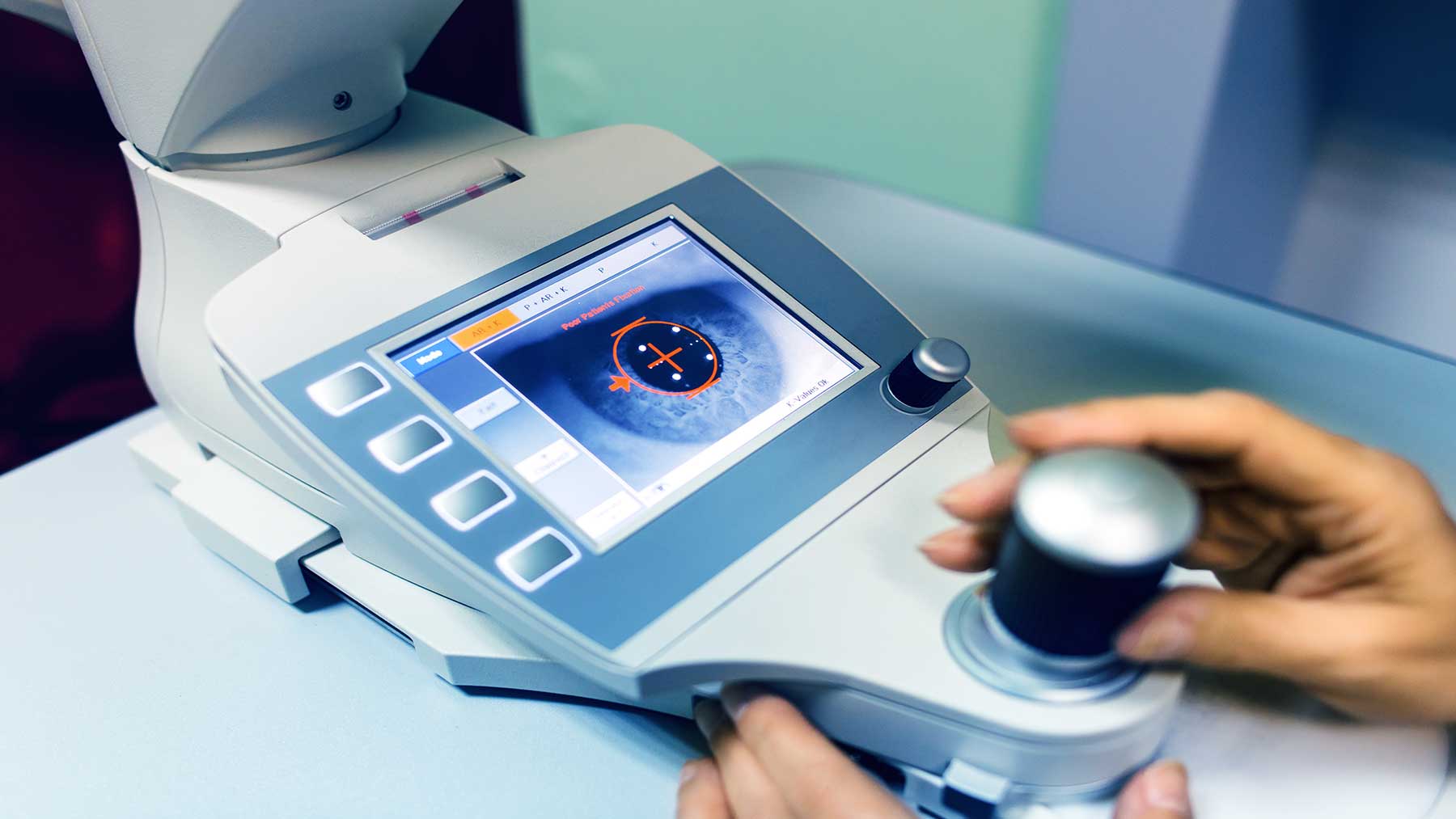What is topography-guided LASIK Eye Surgery?

Finally hitting your breaking point with glasses and contacts? The technology of LASIK eye surgery is continually improving – leading to better end results for patients.
For those with certain eye conditions, doctors now utilize high-tech topography-guided LASIK. This is used in about 20 percent of LASIK procedures done at Ohio State Havener Eye Institute.
Topography-guided LASIK is an advanced treatment for myopia (near-sightedness) and astigmatism (a condition that causes blurred vision). The procedure customizes the laser treatment to the unique surface shape of your eye.
Topography-guided LASIK includes wavefront optimization, which is designed to improve the final shape of the surface of the cornea to prevent side effects such as glare and halos at night.
In addition to helping those with myopia and astigmatism, topography-guided LASIK can treat eyes with abnormal corneal surfaces in patients who may have been told they were not candidates for LASIK surgery.
That’s one of the huge benefits of topography-guided refractive surgery – we are opening up doors that were previously shut for patients.
Most patients experience about four hours of discomfort immediately following the procedure and may need to use artificial tears to combat dry eyes for the first couple of weeks. While extremely rare, a risk of infection is associated with all surgeries. To prevent the chance of infection, you’ll be placed on antibiotic drops post-surgery.
The recovery time for topography-guided LASIK is the same as wavefront-optimized LASIK, which is about one day. The following morning after LASIK, your vision should be clear without contacts or glasses.
4 Questions my patients always ask about LASIK:
1. Will my insurance cover LASIK?
Typically insurance companies will not cover the cost of LASIK, as it is still considered an elective procedure. You can, however, call your provider and ask if you have any LASIK benefits. And don’t forget, insurance benefits can change from year to year.
2. Am I too old for LASIK?
People of all ages are having LASIK. There really is no upper age limit. Come in and have a conversation with our surgeons to see if LASIK is a good idea for you!
3. When can I resume normal activity?
Many patients having LASIK are doing so because they are very active – for example, training for a marathon. You are able to resume normal activity the day after treatment. We do ask that you avoid swimming pools and hot tubs for three weeks.
4. How do I know if I’m a candidate for LASIK?
Come in for one of our free evaluations and have a one-on-one with our experienced surgeons. These evaluations typically take about one hour, and we do dilate your eyes.
David Castellano, MD, is an ophthalmologist at the Ohio State Havener Eye Institute and specializes in LASIK refractive surgery.
How would you like to schedule?
Don’t have MyChart? Create an account




